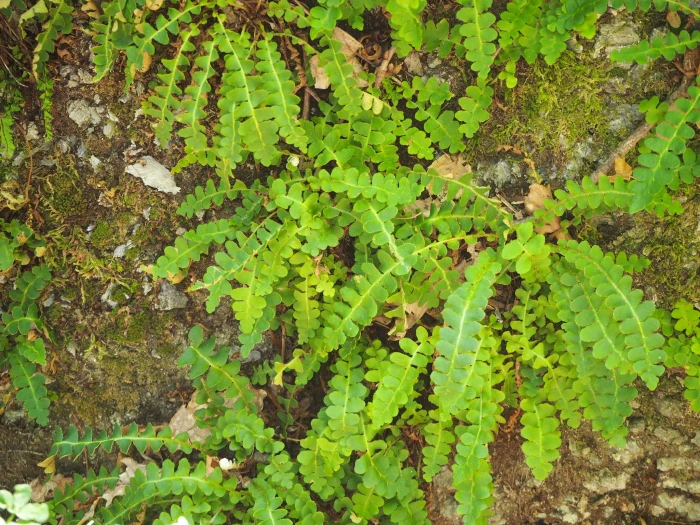Rustyback Fern
(Asplenium ceterach)
Rustyback Fern (Asplenium ceterach)
/
/

silk128
CC BY 4.0
Image By:
silk128
Recorded By:
Copyright:
CC BY 4.0
Copyright Notice:
Photo by: silk128 | License Type: CC BY 4.0 | License URL: http://creativecommons.org/licenses/by/4.0/ | Rights Holder: silk128 | Publisher: iNaturalist | Date Created: 2019-07-21T11:03:34-07:00 |
























Estimated Native Range
Climate Requirements
| • Precipitation | 28" - 34" |
| • High Temp. | 73°F - 86°F |
| • Low Temp. | 28°F - 40°F |
Summary
Asplenium ceterach, commonly known as rustyback fern, is a perennial, evergreen fern characterized by fronds that typically grow up to 8 inches long. The fronds are notable for their pale reddish-brown scales on the underside, which give the plant its common name. This fern is native to a range of habitats in Europe, including rocky outcrops, limestone pavements, and stone walls within open woodlands and scrublands, as well as across the Mediterranean, extending to parts of Asia and North Africa. It is particularly adapted to grow in fissures on carbonate rocks, where it can be found up to altitudes of 8858 feet.
Rustyback fern is valued for its drought tolerance and ability to grow in full sun, making it a unique fern in the gardening world. Its compact size and interesting texture make it suitable for rock gardens, green roofs, and as a wall crevice plant, where it can add greenery to vertical surfaces. In cultivation, it requires well-drained soil, preferably alkaline due to its native limestone habitats, and can tolerate dry conditions once established. While it has medicinal uses, gardeners primarily grow A. ceterach for its ornamental qualities and its resilience in challenging growing conditions.CC BY-SA 4.0
Rustyback fern is valued for its drought tolerance and ability to grow in full sun, making it a unique fern in the gardening world. Its compact size and interesting texture make it suitable for rock gardens, green roofs, and as a wall crevice plant, where it can add greenery to vertical surfaces. In cultivation, it requires well-drained soil, preferably alkaline due to its native limestone habitats, and can tolerate dry conditions once established. While it has medicinal uses, gardeners primarily grow A. ceterach for its ornamental qualities and its resilience in challenging growing conditions.CC BY-SA 4.0
Plant Description
- Plant Type: Ferns
- Height: 0.1-0.5 feet
- Width: 0.2-0.5 feet
- Growth Rate: Slow
- Flower Color: N/A
- Flowering Season:
- Leaf Retention: Evergreen
Growth Requirements
- Sun: Part Shade
- Water: Medium
- Drainage: Fast, Medium
Common Uses
Border Plant, Low Maintenance, Rock Garden
Natural Habitat
Native to rocky outcrops, limestone pavements, and stone walls within open woodlands and scrublands
Other Names
Common Names: Scaly Fern
Scientific Names: Asplenium ceterach , Ceterach bivalens
GBIF Accepted Name: Asplenium ceterach